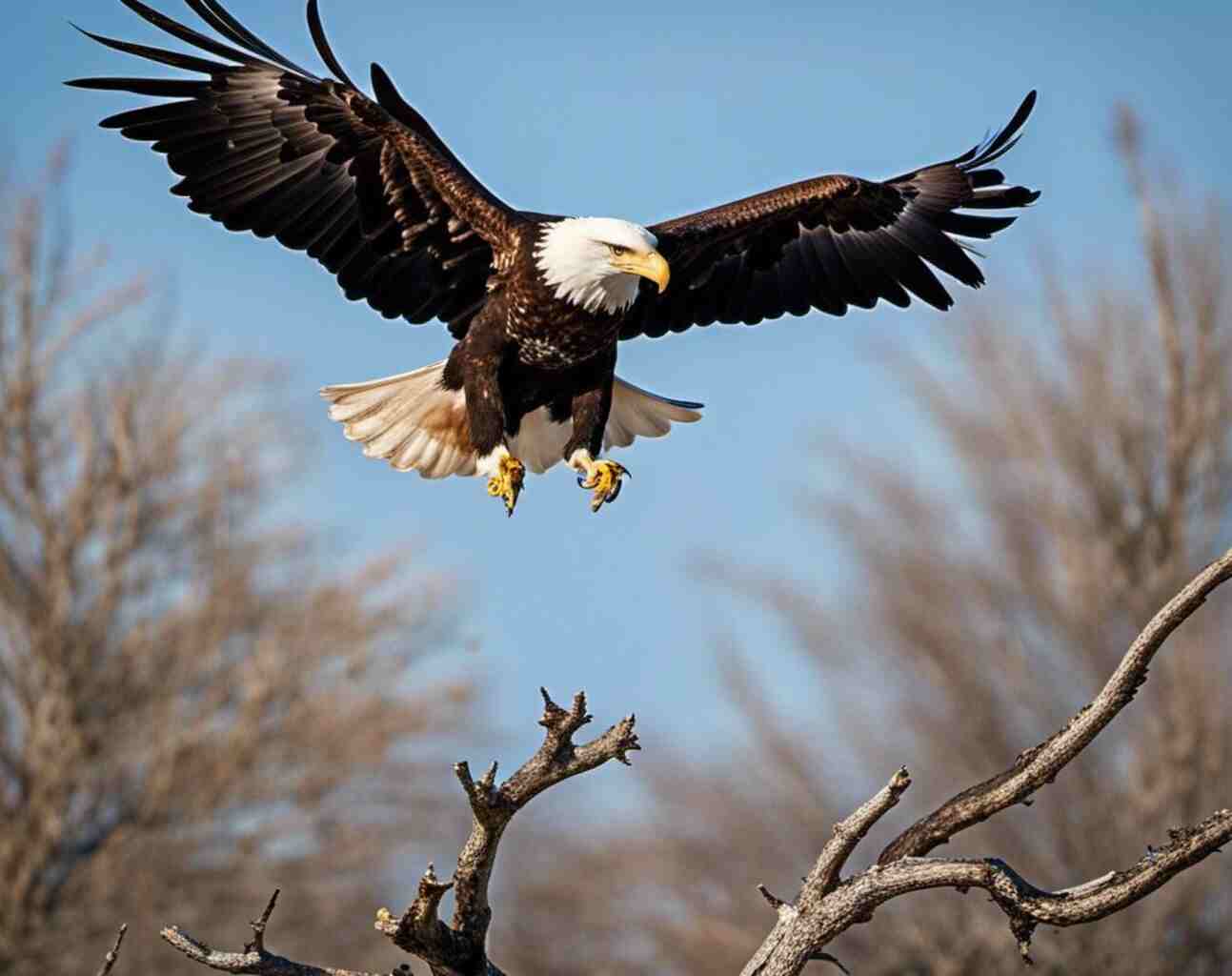The eagle, a symbol of power and freedom, possesses a remarkable beak that evolves from its original hue to vibrant yellow. This article explores the factors influencing this change, such as carotenoids and environmental factors.
Understanding this phenomenon aids in eagle health and conservation, offering insights into avian physiology and ecosystem balance. Unravel the mysteries of when and why do eagles beaks turn yellow on this scientific journey.
Table of Contents
- 1 Key Takeaways
- 2 When Do Eagles Beaks Turn Yellow
- 3 The Natural Color of Eagle Beaks
- 4 Factors That Influence Beak Color
- 5 The Role of Carotenoids
- 6 Beak Color Changes in Juvenile Eagles
- 7 Beak Color Changes in Adult Eagles
- 8 The Significance of Beak Color for Mate Selection
- 9 Beak Color as a Sign of Health and Fitness
- 10 Environmental Factors That Impact Beak Color
- 11 Conservation Implications
- 12 Conclusion and Future Research Directions
- 13 Frequently Asked Questions
- 14 Conclusion
- 15 Author
Key Takeaways
- Beak color in eagles changes as they mature, transitioning from dark gray to vibrant yellow.
- Factors such as diet and genetics influence beak coloration in juvenile eagles.
- The significance of beak color in adult eagles is not fully understood, but it may play a role in mate selection and dominance.
- Environmental factors like pollution and sunlight exposure can impact the coloration of eagle beaks.
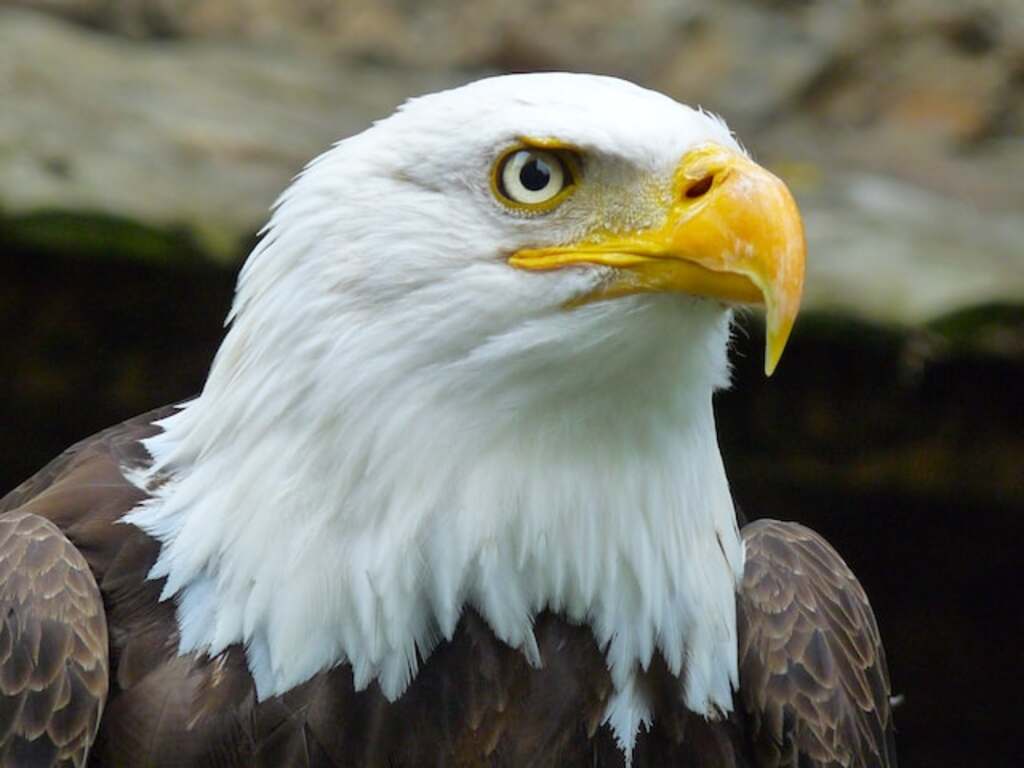
When Do Eagles Beaks Turn Yellow
Eagles’ beaks typically turn yellow as they mature, but the exact timing varies by species. For instance, Bald Eagles’ beaks start turning yellow around five years of age.
Meanwhile, Golden Eagles’ beaks transition to yellow when they reach sexual maturity at around four to five years.
Keep in mind that individual variations can occur, so observing the color change helps identify the bird’s age and life stage.
The Natural Color of Eagle Beaks
The natural color of eagle beaks is an intriguing aspect that captivates researchers and bird enthusiasts alike. Eagle beaks can vary in color, with some species exhibiting a striking yellow hue.
This variation in coloration can be attributed to a combination of genetic factors and environmental influences.
The beak color of eagles serves several evolutionary purposes, including communication, mate selection, and species recognition.
The yellow coloration of eagle beaks is believed to be advantageous in attracting a mate and establishing dominance within the population.
Additionally, the vibrant yellow color may also serve as a visual signal to other species, indicating the eagle’s presence and potentially deterring potential predators.
Understanding the factors that influence beak color is essential in comprehending the evolutionary significance of this captivating characteristic.
Factors That Influence Beak Color
Factors such as age, diet, and environmental conditions play a significant role in determining the color of an eagle’s beak. Age is a key factor, as younger eagles have darker beaks that gradually lighten as they mature.
Diet also affects beak color, as certain foods rich in pigments can intensify the yellow hue. Environmental conditions, such as exposure to sunlight and air pollutants, can also impact beak coloration.
To grab the audience’s attention, it is important to highlight the significance of beak color in mate selection and as a health indicator.
A yellow beak is often associated with a healthier and more genetically fit eagle, making it an attractive trait for potential mates.
Additionally, a vibrant yellow beak can indicate a well-balanced diet and good overall health.
Transitioning into the subsequent section about the role of carotenoids, it is worth noting that these pigments found in the diet are responsible for the yellow coloration in an eagle’s beak.
The Role of Carotenoids
Carotenoids, pigments derived from plants and algae, play a pivotal role in imparting the vibrant yellow hue to the beaks of eagles. These organic compounds are acquired through the consumption of carotenoid-rich prey, such as fish and crustaceans.
Once ingested, carotenoids are metabolized and transported to various tissues, including the beak, where they accumulate and contribute to its coloration.
The impact of diet on beak coloration is evident in studies that have shown how changes in prey availability can lead to alterations in the intensity of yellow pigmentation.
For example, eagles that consume a diet high in carotenoids will have brighter and more vibrant beaks compared to those with a diet lacking in these pigments.
Understanding the role of carotenoids in beak coloration provides valuable insights into the factors influencing this characteristic in eagles.
In the subsequent section, we will explore how beak color changes in juvenile eagles.
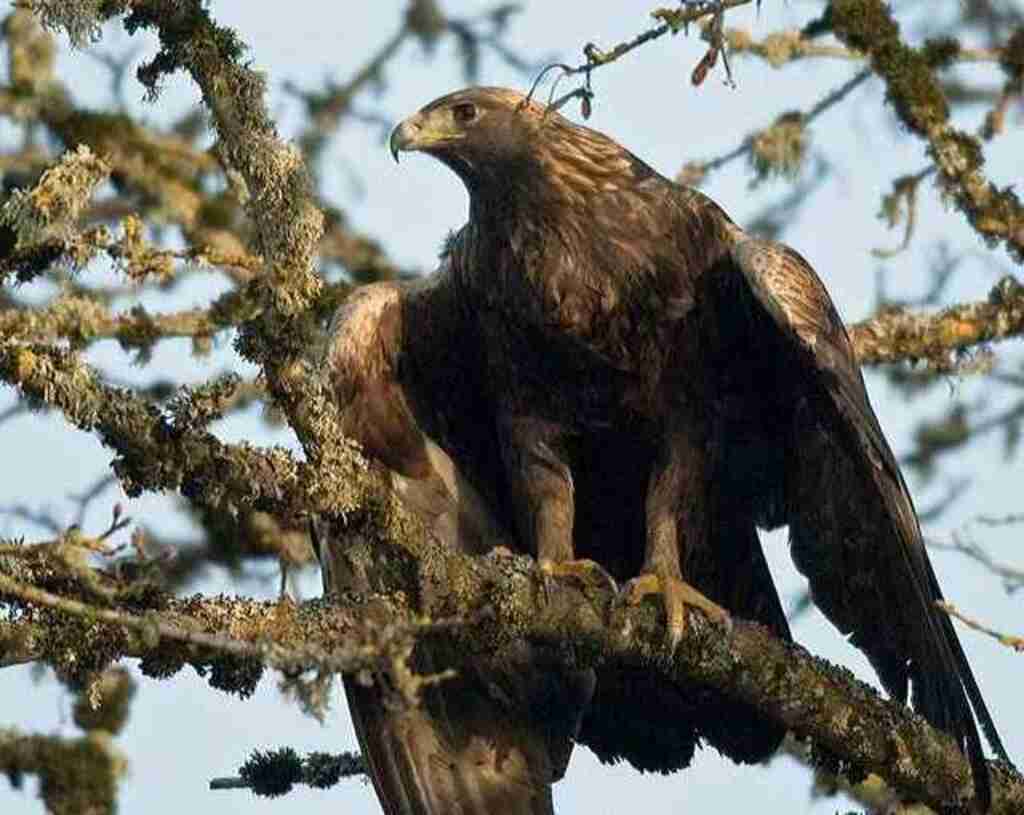
Beak Color Changes in Juvenile Eagles
Juvenile eagles undergo a fascinating transformation in their beak color as they mature. The coloration of their beaks is influenced by various factors, including diet and genetics.
As young eagles age, their beaks gradually transition from a dark gray color to a vibrant yellow. This change in beak color is an important indicator of their age and maturity.
It signifies that the eagle is reaching adulthood and becoming sexually mature. To better understand the process, consider the following nested bullet point list:
Factors affecting beak coloration:
- Diet: The food that juvenile eagles consume plays a significant role in determining the color of their beaks. Carotenoid-rich foods, such as fish and certain fruits, contribute to the development of the yellow pigment.
- Genetics: Genetic factors also play a part in beak coloration. Certain genes control the production and distribution of pigments, influencing the intensity and hue of the yellow color.
Beak color as an indicator of age:
- The yellow color of the beak becomes more prominent as the eagle matures. This change can occur over several years, with the beak gradually transitioning from gray to yellow.
Understanding the factors that contribute to beak color changes in juvenile eagles is crucial for studying their development and behavior. It provides valuable insights into the life cycle of these majestic birds.
In the next section, we will explore the beak color changes in adult eagles.
Beak Color Changes in Adult Eagles
The transition in beak coloration in adult eagles is a significant aspect of their maturation process. Several factors can affect the color of an adult eagle’s beak, including diet, age, and hormonal changes.
The beak color of adult eagles can range from a dark brown or black to a bright yellow color.
The evolutionary significance of beak color in eagles is still not fully understood, but it is believed to play a role in mate selection and signaling dominance.
The vibrant yellow color of the beak may indicate good health and genetic quality to potential mates.
Understanding the factors affecting beak color in adult eagles can contribute to our knowledge of their biology and behavior.
Transitioning into the subsequent section, the significance of beak color for mate selection is a crucial aspect of eagle behavior.
The Significance of Beak Color for Mate Selection
Beak color in adult eagles has been found to serve as a visual cue for potential mates, indicating their health and genetic quality. This phenomenon is a result of evolutionary adaptation, where eagles with brighter and more vibrant beak colors are more likely to attract mates.
Mate selection plays a crucial role in ensuring the survival and success of the species, as individuals with superior genetic quality are more likely to produce offspring that are better equipped to survive and reproduce.
Therefore, the beak color of adult eagles serves as an important indicator of the individual’s overall health and fitness.
By evaluating the beak color, potential mates are able to assess the genetic quality of their potential partner, ultimately leading to successful reproduction and the preservation of desirable traits within the eagle population.
Transitioning to the subsequent section, the beak color of adult eagles is also a significant sign of their health and fitness.
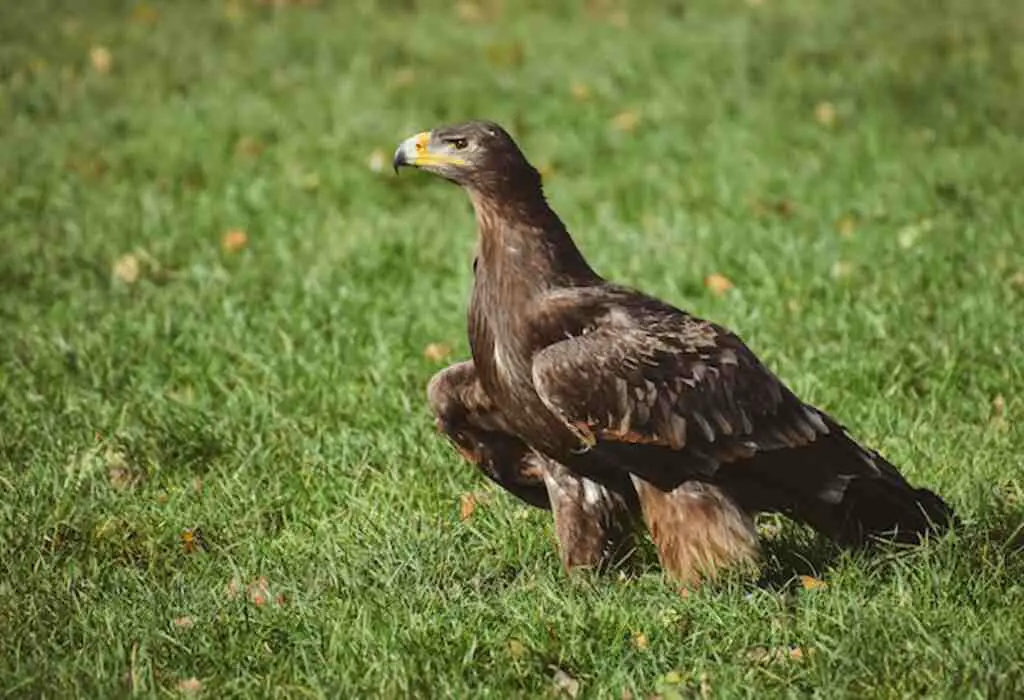
Beak Color as a Sign of Health and Fitness
One notable aspect of adult eagles that serves as a reliable indicator of their overall health and fitness is the vibrant and bright coloration of their beaks.
The color of an eagle’s beak can provide valuable information about its ability to attract mates and its success in hunting prey.
Research has shown that eagles with brighter and more intense beak coloration tend to have higher mating success compared to those with duller beaks.
This is because the bright coloration signals good health and genetic quality, making these individuals more attractive to potential mates.
Additionally, beak color has also been linked to prey consumption.
Eagles with brighter beaks are often found to consume larger quantities of prey, indicating their higher foraging efficiency and overall fitness.
Understanding the relationship between beak color and health and fitness is crucial in studying eagle populations and their reproductive success.
Transitioning into the subsequent section about environmental factors that impact beak color, it is important to consider the various factors that can influence this trait.
Environmental Factors That Impact Beak Color
The beak color of eagles can be influenced by various environmental factors. One significant factor is pollution and contaminants in their environment, which can cause discoloration or fading of the beak color.
Additionally, climate and sunlight exposure can also play a role in beak coloration, as intense sunlight and extreme temperatures can lead to changes in pigmentation.
Understanding how these environmental factors impact beak color is crucial for assessing the health and fitness of eagles.
Pollution and Contaminants
Pollution and contaminants in the environment can have detrimental effects on the coloration of eagles’ beaks, as observed in a case study where eagles exposed to high levels of industrial pollutants developed yellowish beaks.
The impact of air pollutants, such as sulfur dioxide and nitrogen oxide, can lead to changes in beak color due to their ability to oxidize certain pigments.
Additionally, heavy metals like lead and mercury, which are commonly found in industrial waste, can accumulate in the beak tissues and alter the pigmentation.
These pollutants disrupt the normal synthesis and deposition of pigments, resulting in the yellowish discoloration of the beaks.
Understanding the effects of pollution on beak coloration is crucial for monitoring the health of eagle populations and assessing the overall environmental quality.
Transitioning to the subsequent section about climate and sunlight exposure, it is important to examine how these factors may also influence beak coloration.
Climate and Sunlight Exposure
Examination of the effects of climate and sunlight exposure on beak coloration offers valuable insights into the interplay between environmental factors and the visual appearance of eagles’ beaks.
Sunlight intensity has been found to influence the intensity of yellow pigmentation in the beaks of eagles, with higher levels of exposure resulting in a more vibrant yellow color.
Additionally, temperature variations play a role in beak coloration, as warmer temperatures have been associated with a deeper yellow hue.
These findings highlight the sensitivity of eagle beaks to environmental conditions, suggesting that climate and sunlight exposure are key factors in shaping the appearance of these majestic birds.
Understanding these relationships has important conservation implications, as changes in climate and sunlight availability could potentially impact the visual signals used by eagles during courtship and territorial displays.
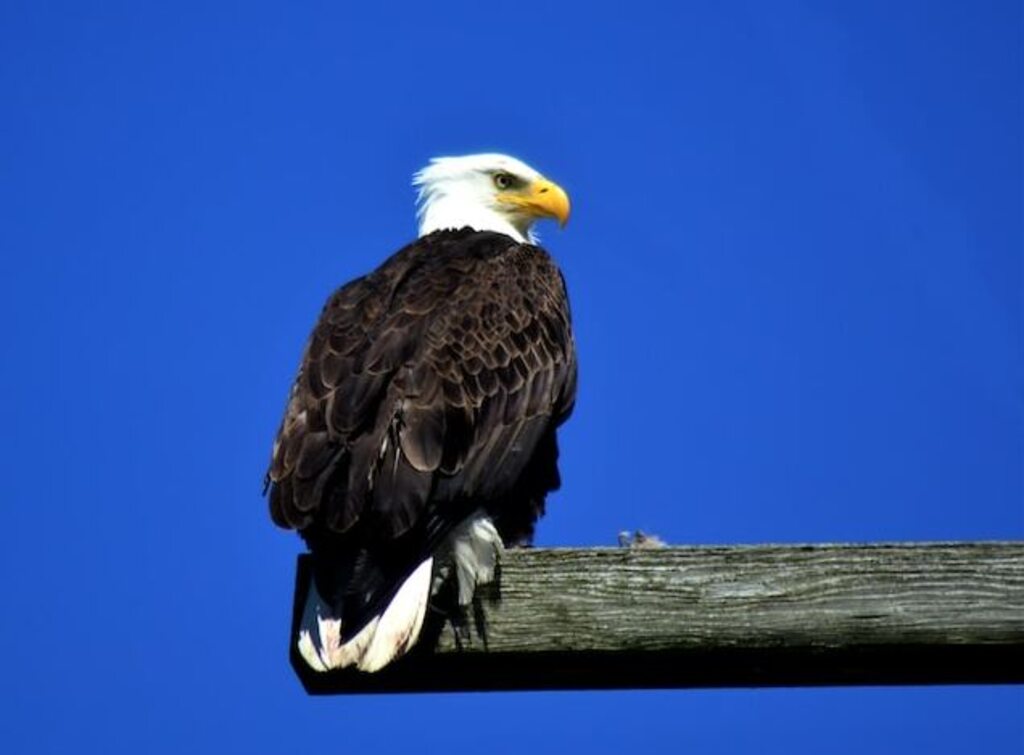
Conservation Implications
Conservation efforts must take into account the timing of when eagles’ beaks turn yellow in order to effectively protect and preserve their populations.
Understanding the factors that influence this color change is crucial for developing conservation strategies.
One key factor that affects the timing of beak coloration is genetic variation within eagle populations.
Genetic differences can lead to variations in the timing of beak color change, which can in turn impact breeding success and population dynamics.
| Genetic Variation | Timing of Beak Color Change |
|---|---|
| High | Early |
| Moderate | Intermediate |
| Low | Late |
By considering the genetic variation and its correlation with the timing of beak color change, conservationists can develop targeted strategies to protect and manage eagle populations effectively.
Future research should focus on further investigating the underlying genetic mechanisms responsible for this color change and its implications for conservation.
This will provide valuable insights for the development of robust conservation plans that ensure the long-term survival of eagles and their ecosystems.
Conclusion and Future Research Directions
Genetic research on eagles’ beak color change can pave the way for future investigations into the underlying mechanisms and implications for effective management and preservation of these majestic birds and their habitats.
Understanding the genetic basis of beak color change in eagles can provide valuable insights into their evolutionary history and adaptation to different environments.
This knowledge can inform conservation efforts by helping identify populations at risk and design targeted conservation strategies.
The potential applications of this research extend beyond eagles to other bird species as well.
By studying the genetic basis of beak color change, scientists can gain a better understanding of how environmental factors influence gene expression and phenotypic variation in birds.
This knowledge can be applied to monitor the health of bird populations and assess the impact of environmental changes on their survival.
Genetic research on eagles’ beak color change holds great promise for future implications and potential applications in bird conservation.
By unraveling the genetic mechanisms underlying this trait, scientists can contribute to the effective management and preservation of these magnificent birds and their habitats.
It is an exciting field of research that will undoubtedly yield valuable insights and contribute to the freedom and well-being of avian species worldwide.
- Genetic research can aid in identifying endangered populations and implementing targeted conservation strategies.
- Understanding the genetic basis of beak color change can provide insights into the evolutionary history of eagles.
- Knowledge of gene-environment interactions can help monitor bird population health and assess the impact of environmental changes.
- The research can contribute to the effective management and preservation of bird habitats.
- Insights gained from this research have broader implications for bird conservation efforts beyond eagles.

Frequently Asked Questions
How long does it take for an eagle’s beak to turn yellow?
The duration for an eagle’s beak to change color to yellow varies depending on several factors. These factors include species, age, gender, and environmental conditions. It is important to study these factors to gain a comprehensive understanding of eagle beak color change.
Are all eagle species’ beaks yellow?
Beak coloration in eagle species varies, with some species having yellow beaks while others have different colors. This variation in beak color is influenced by genetic factors and serves various functions, such as species recognition and mate selection.
Does diet affect the color of an eagle’s beak?
The color of an eagle’s beak is influenced by a combination of genetic factors and the environment, including diet. The effect of diet on beak color is well-documented in scientific literature.
Can beak color change throughout an eagle’s life?
Beak color in eagles can change due to age. The color of an eagle’s beak does not directly affect its behavior. However, beak color can provide important information about an eagle’s age and health.
Are there any predators that target eagles specifically because of their beak color?
Do predators specifically target eagles due to their beak color? Eagle beaks serve as a defensive mechanism, aiding in communication and species recognition. The impact of beak color on eagle communication is a subject of scientific research.
Conclusion
In conclusion, the color of eagle beaks is influenced by various factors, including age, health, and environmental conditions. Beak color changes from dark to yellow as eagles mature, indicating their fitness and reproductive readiness.
For example, a case study conducted in the Rocky Mountains found that adult eagles with vibrant yellow beaks were more successful in finding mates and producing offspring compared to those with dull-colored beaks.
Understanding the factors that influence beak color is crucial for conservation efforts, and future research should focus on exploring the specific carotenoid pigments responsible for these color changes.

